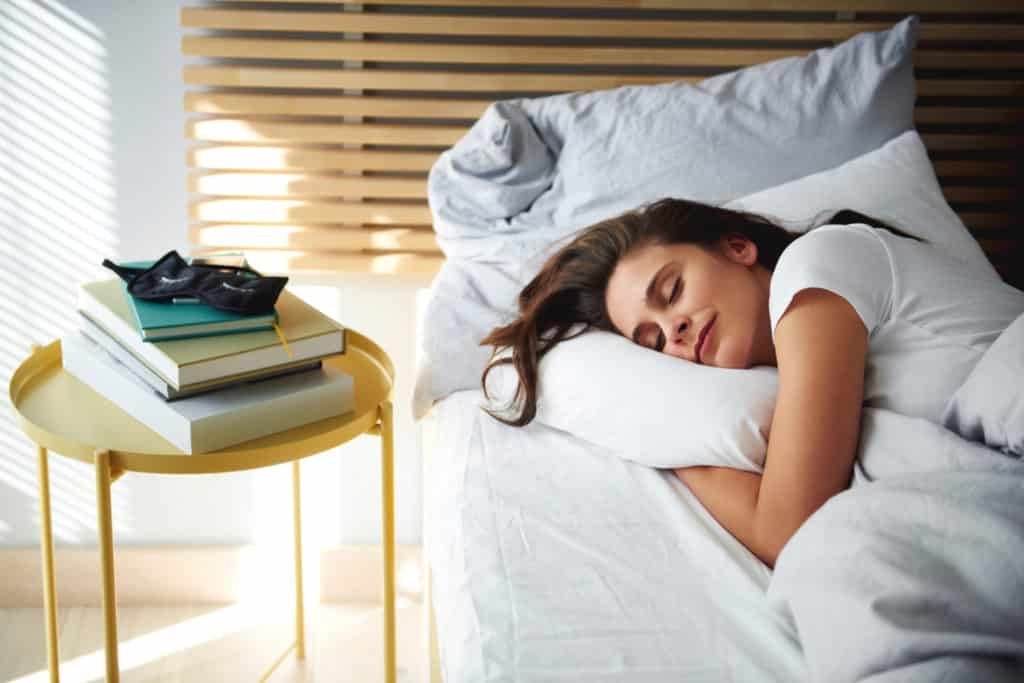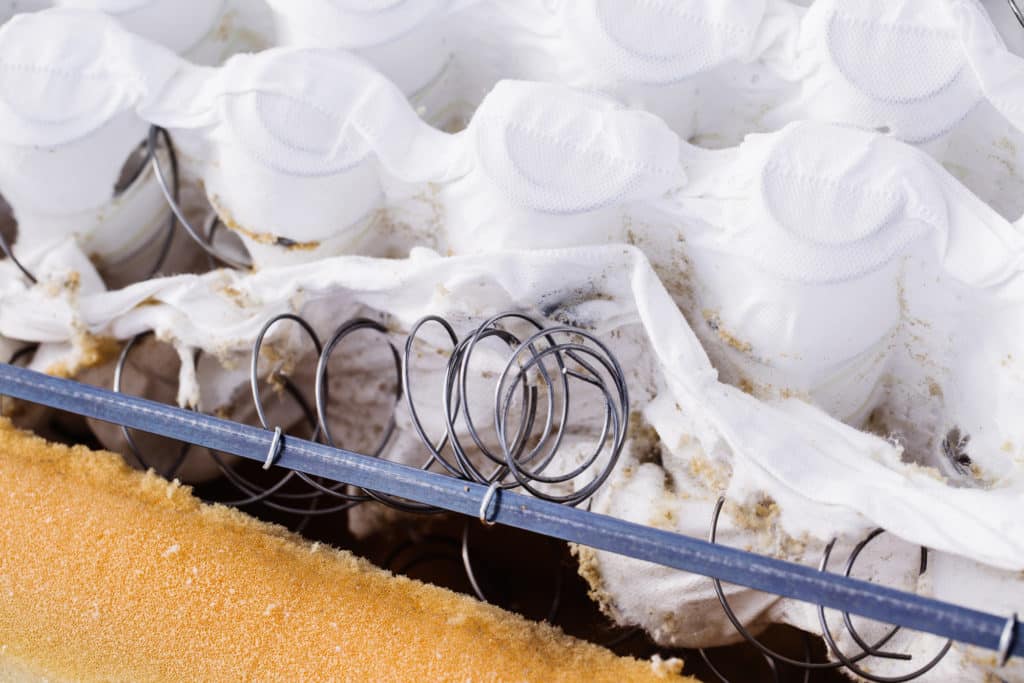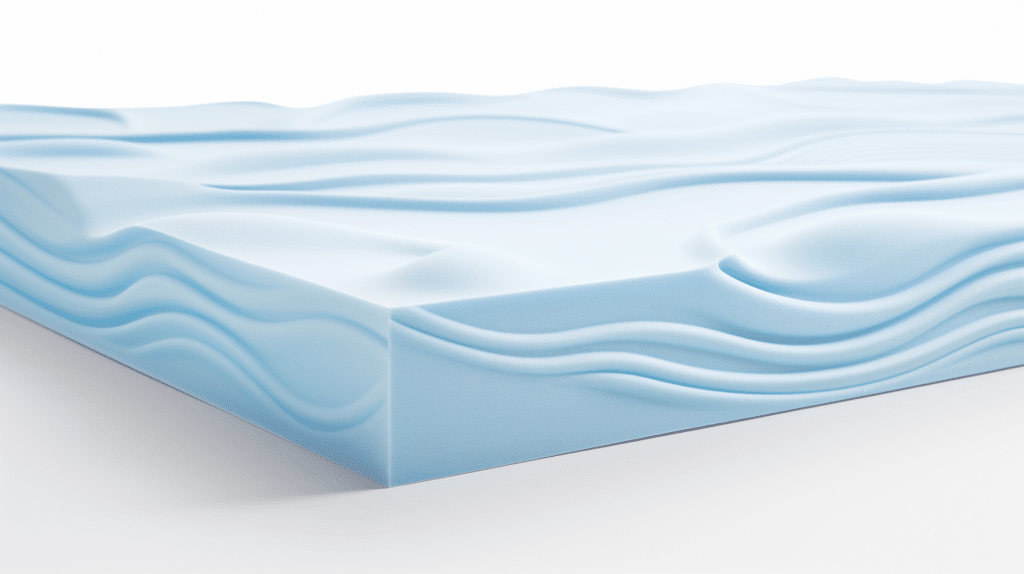Are you suffering from sciatica? Have you ever wondered if your mattress could be the cause? In this article, we will explore the connection between mattresses and sciatica, helping you understand how your sleeping surface can impact your pain. Sciatica is a condition characterized by sharp, shooting pain that radiates from the lower back down through the leg. It occurs when there is irritation or compression of the sciatic nerve, which is the longest nerve in the body. While there are several factors that can contribute to sciatica, such as herniated discs or spinal stenosis, your mattress may also play a role in exacerbating your symptoms.
When it comes to sciatica relief, finding proper spinal alignment is crucial. Your mattress should provide adequate support to keep your spine in a neutral position throughout the night. If your mattress is too soft or sagging in certain areas, it can cause misalignment and put pressure on the sciatic nerve. On the other hand, an overly firm mattress may not contour to your body’s natural curves, leading to added stress on sensitive areas like the lower back and hips. By choosing a mattress that strikes a balance between firmness and support, you can help alleviate sciatic nerve pain while promoting better sleep quality overall.
Understanding Sciatica and its Causes
Did you know that a mattress can actually be the cause of your excruciating sciatica pain? Sciatica is a condition characterized by pain that radiates along the path of the sciatic nerve, which runs from the lower back down through the hips and buttocks to each leg. One common cause of sciatica is spinal misalignment, where the vertebrae in your spine are not properly aligned. Sleeping on a mattress that does not provide adequate support can contribute to this misalignment, leading to increased pressure on the sciatic nerve and resulting in pain. Additionally, your sleeping position plays a crucial role in determining whether your mattress will aggravate or alleviate your sciatica symptoms. For instance, side sleepers may experience more strain on their hips and lower back if their mattress does not provide sufficient contouring support. Therefore, it is essential to choose a mattress that promotes proper spinal alignment and supports your preferred sleeping position to prevent or alleviate sciatica pain.
The Role of Spinal Alignment in Sciatic Nerve Pain

Improper alignment of the spine can intensify the agonizing pain experienced from the inflamed sciatic nerve. When your spine is not properly aligned, it puts pressure on the nerves, including the sciatic nerve, leading to increased discomfort and potentially worsening symptoms. One common cause of spinal misalignment is an unsupportive mattress that fails to provide adequate support for your body. If your mattress does not align with your natural curves and maintain proper spinal posture while you sleep, it can contribute to or exacerbate sciatica pain. Therefore, ensuring proper spinal alignment through a supportive mattress and practicing good posture during daily activities may help alleviate sciatic nerve pain and prevent further aggravation of this condition.
Choosing the Right Mattress for Sciatica Relief
To find relief for your sciatic nerve pain, it’s important to select a mattress that properly supports your spine and promotes healthy sleeping posture. The best mattress for sciatica relief is one that provides the right level of firmness. A mattress that is too soft may cause your body to sink in, leading to poor spinal alignment and increased pressure on the sciatic nerve. On the other hand, a mattress that is too firm can create uncomfortable pressure points on sensitive areas like hips and shoulders. It’s recommended to choose a medium-firm mattress that offers a balance of support and comfort. This type of mattress will help maintain the natural curve of your spine while alleviating any pressure or tension on the sciatic nerve, allowing you to sleep more comfortably and potentially reduce sciatica symptoms.
Firmness and Support: Finding the Balance
Finding the perfect balance between firmness and support is crucial for alleviating sciatic nerve pain and promoting a comfortable night’s sleep. When it comes to finding the right firmness, it’s important to consider how your mattress impacts your sleep quality. A mattress that is too soft may not provide enough support for your spine, causing misalignment and exacerbating sciatica symptoms. On the other hand, a mattress that is too firm can create pressure points and lead to discomfort throughout the night. By finding the ideal balance of firmness and support, you can ensure that your mattress properly aligns your spine, relieves pressure on the sciatic nerve, and ultimately improves your sleep quality.
Memory Foam vs. Innerspring: Which is Better for Sciatica?
When it comes to choosing the best option for your sciatica, you may be wondering which is better: memory foam or innerspring? Memory foam mattresses have several benefits that make them a popular choice for those with sciatica. The main advantage of memory foam is its ability to contour to your body, providing personalized support and relieving pressure points. This can help alleviate the pain and discomfort associated with sciatica. Additionally, memory foam mattresses are known for their motion isolation properties, meaning they absorb movement and prevent it from being transferred across the bed. On the other hand, innerspring mattresses may not be as effective for sciatica relief due to their lack of contouring abilities. Innerspring mattresses typically have coils that provide support, but they may not conform well to the curves of your body. This can result in increased pressure on certain areas and potentially worsen sciatica symptoms. So when considering which mattress is better for your sciatica, memory foam’s benefits such as personalized support and pressure relief make it a favorable choice over traditional innerspring mattresses with their drawbacks in contouring abilities.
Considerations for Side Sleepers with Sciatica
Now that you have learned about the differences between memory foam and innerspring mattresses for sciatica, let’s focus on the considerations for side sleepers with this condition. If you are a side sleeper dealing with sciatica, it is crucial to pay attention to your sleeping positions and pillow support. Finding the right side sleeper position can help alleviate pressure on your sciatic nerve and provide relief. Additionally, having proper pillow support is essential as it helps maintain proper spinal alignment and reduces strain on your lower back and hips. So, when choosing a mattress for sciatica as a side sleeper, remember to consider both your sleeping positions and the importance of pillow support.
Adjustable Beds and Sciatica Relief
An effective solution for individuals with sciatica seeking relief is to consider using adjustable beds. Adjustable beds offer a range of positions that can alleviate pressure on the sciatic nerve and provide customized support for side sleepers. By allowing you to elevate your upper body or legs, these beds can help reduce pain and discomfort associated with sciatica. Additionally, the impact of the mattress on overall health cannot be overlooked. A supportive mattress that conforms to your body’s contours can further enhance sleep quality by relieving pressure points and promoting proper spinal alignment. Therefore, investing in an adjustable bed with a suitable mattress can greatly improve your sleep experience and potentially alleviate symptoms of sciatica.
Additional Tips for Managing Sciatic Nerve Pain at Night
For a more pleasant sleep experience, try incorporating these extra tips to help ease nighttime discomfort from sciatic nerve pain. During the day, make sure to implement tips for pain management such as regular exercise, maintaining good posture, and using hot or cold therapy. Stretching exercises like yoga or Pilates can also provide relief by improving flexibility and strengthening the muscles surrounding the sciatic nerve. Additionally, consider natural remedies for sciatic nerve pain such as applying essential oils like lavender or peppermint to the affected area. These oils have anti-inflammatory properties that can help reduce swelling and alleviate pain. Lastly, practicing relaxation techniques before bed, such as deep breathing or meditation, can help calm your mind and relax your body, making it easier to fall asleep and stay asleep throughout the night.
Seeking Professional Advice for Sciatica and Mattress Selection
Consider reaching out to a healthcare professional who can provide expert advice on managing your sciatic nerve pain and help guide you in selecting the best sleep solution for your specific needs. Professional recommendations are essential when it comes to finding the right mattress that can alleviate your sciatica symptoms. A healthcare professional will take into account factors such as your body type, sleeping position, and personal preferences to recommend a suitable mattress. They may suggest options with proper support and cushioning to align your spine correctly and relieve pressure on the sciatic nerve. Additionally, they might advise you to try out different mattresses before making a purchase or consider adjustable beds that allow customization for optimal comfort. Seeking professional advice ensures that you make an informed decision while mattress shopping, ultimately improving your chances of finding relief from sciatic nerve pain during sleep.
Investing in Your Sleep Health: The Benefits of a Mattress for Sciatica Relief
Improve your sleep and find relief from sciatic nerve pain by investing in a high-quality mattress designed to alleviate discomfort. When it comes to managing sciatica, the right sleep positions can make a significant difference. Sleeping on your side with a pillow between your legs can help align your spine and reduce pressure on the sciatic nerve. Additionally, choosing the right mattress firmness is crucial for reducing sciatic pain. A medium-firm mattress provides a balance of support and cushioning, helping to relieve pressure points while maintaining proper spinal alignment. By investing in a mattress that caters specifically to sciatica relief, you can significantly improve the quality of your sleep and reduce discomfort throughout the night.
Conclusion
In conclusion, when it comes to managing sciatic nerve pain, choosing the right mattress is crucial. A mattress that promotes spinal alignment and provides proper support can greatly alleviate discomfort and help you get a good night’s sleep. Memory foam mattresses are often recommended for their ability to contour to your body and relieve pressure points. However, innerspring mattresses can also be beneficial if they offer sufficient support.
Additionally, adjustable beds can provide added relief by allowing you to find the best position for your comfort. It is important to remember that while a mattress can help with sciatica, it is not a cure-all solution. Seeking professional advice from a healthcare provider or physical therapist is recommended for a comprehensive treatment plan. Investing in your sleep health by choosing the right mattress can have long-lasting benefits in providing relief from sciatica and improving overall well-being.


